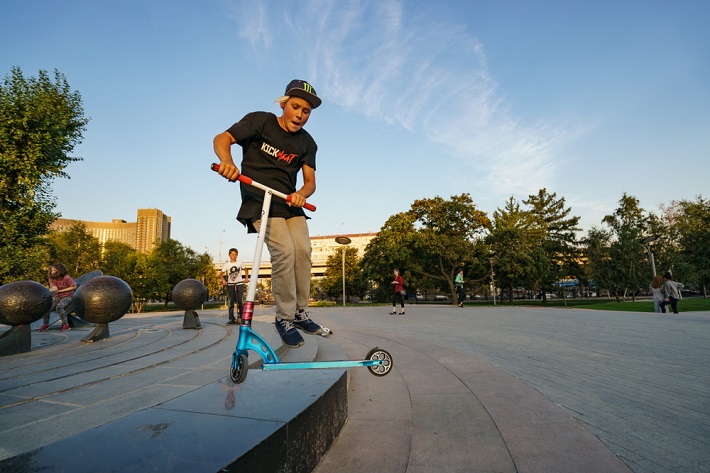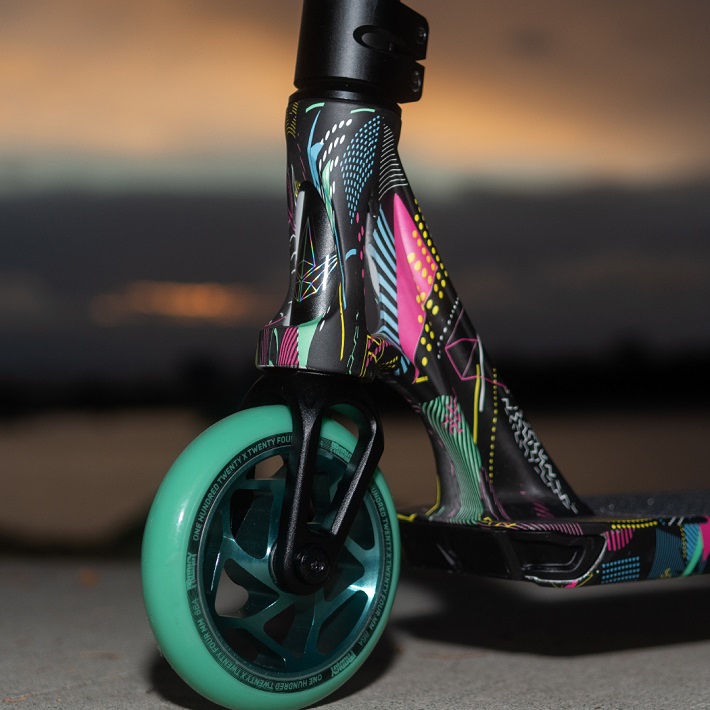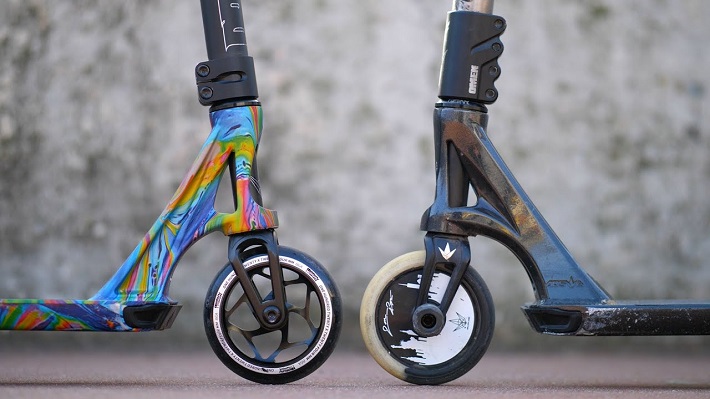Do you want to try your hand at a new hobby? Don’t want to settle for just about any old thing to pass the time? If you’re looking for an activity that is both challenging and rewarding, look no further than freestyle scootering.
While most people would turn to skateboarding or BMX biking as their go-to extreme sport, freestyle scootering is quickly becoming a popular choice for those looking for a new yet thrilling hobby. After all, you don’t have to go all out and compete in X-Games level competitions to enjoy the sport. You can start small by simply learning a few new tricks on your own time.
Freestyle vs. Regular Scooters
Before you even begin thinking about which scooter to buy, you first need to understand the difference between freestyle and regular scooters. It’s easy to confuse the two since they look so similar and have many of the same parts. The main difference between the two is in the way they are ridden.
Regular scooters, also known as commuter scooters, are designed for getting around town or campus. They usually have smaller wheels and are more lightweight so that they can be easily carried when not in use.
On the other hand, pro scooters trick and stunt riding related are designed to withstand more rigorous use. They have a thicker base and larger wheels to absorb the impact of jumps and slides along rough surfaces.

How Do You Choose a Freestyle Scooter?
If you’re sold on the idea of having a pro scooter of your own, the next step is picking out the right one for your particular body shape and riding style. At first glance, all models might look the same but there can be big differences in how they perform.
Materials
Starting off with what is virtually the foundation of all scooters trick and stunt performing – the base of the deck. The most common materials used are aluminium and steel, both of which have their own advantages and disadvantages.
Aluminium is the lighter of the two metals but it’s also more prone to denting and scratching. Even though it’s not as durable as steel, it’s still a solid option for those who want to be able to do flips and other tricks that require a lot of air time.
On the flip side, steel offers more protection against wear and tear, but it also adds a significant amount of weight. If you’re just starting out, you’ll likely experience difficulties trying to perform certain tricks with a steel deck.
Design
The way all the component parts are put together also plays a big role in the overall performance of a scooter. Different designs will offer different levels of stability and manoeuvrability.
There are three main types of designs to choose from – T-bar, Y-bar, and I-beam. The T-bar is usually the go-to choice for beginner and intermediate riders since it offers more stability. The Y-bar has a similar effect but it’s a bit more agile in terms of turning. The I-beam is the most advanced of the three and is often used by professional riders who need to be able to make quick turns and directional changes.

Rider’s Age and Skill Level
Speaking of beginner, intermediate, and professional riders – your age and skill level can also have a significant impact on what type of scooter you should get. Not everyone has the same level of experience or the same goals in mind.
If you’re a complete beginner, it’s best to start with an entry-level model that doesn’t have all the bells and whistles. You can always upgrade to something more advanced once you’ve gained some experience and confidence in your riding abilities.
Those who are already familiar with riding a scooter but want to take their skills to the next level will need something with a bit more power. An intermediate-level scooter with a steel deck and larger wheels is a good place to start.
Professional riders usually have their own preferences in terms of the make and model of their device since they’re familiar with the ins and outs of riding. If you’ve been riding for a while and know exactly what you need, it’s probably time to start looking at the more high-end models.
Additional Pro Scooter Features
Aside from the basics that are mentioned above, having a few extra features can also be helpful – especially if you’re planning on doing some serious stunt riding. Why not take your experience to the next level with some handy add-ons?
Scooter Clamps
Most pro scooters will come with standard handlebar clamps but there are also models that have double or even triple clamps. The advantage of having multiple clamps is that they add extra stability to the handlebars, which is definitely a bonus when it comes to performing stunts.
Grip Tape
This one is more of a personal preference rather than a necessity but adding some grip tape to your deck can give you a bit more traction to work with. This can be especially helpful if you’re riding on slippery surfaces or doing tricks that require a lot of movement.

Brake Sensors
If your scooter doesn’t already have a brake sensor, you should definitely consider installing one to improve your safety while riding. Brake sensors automatically engage the brakes when they detect an obstacle in front of the scooter, which can help you avoid collisions – especially if you’re going at high speeds.



